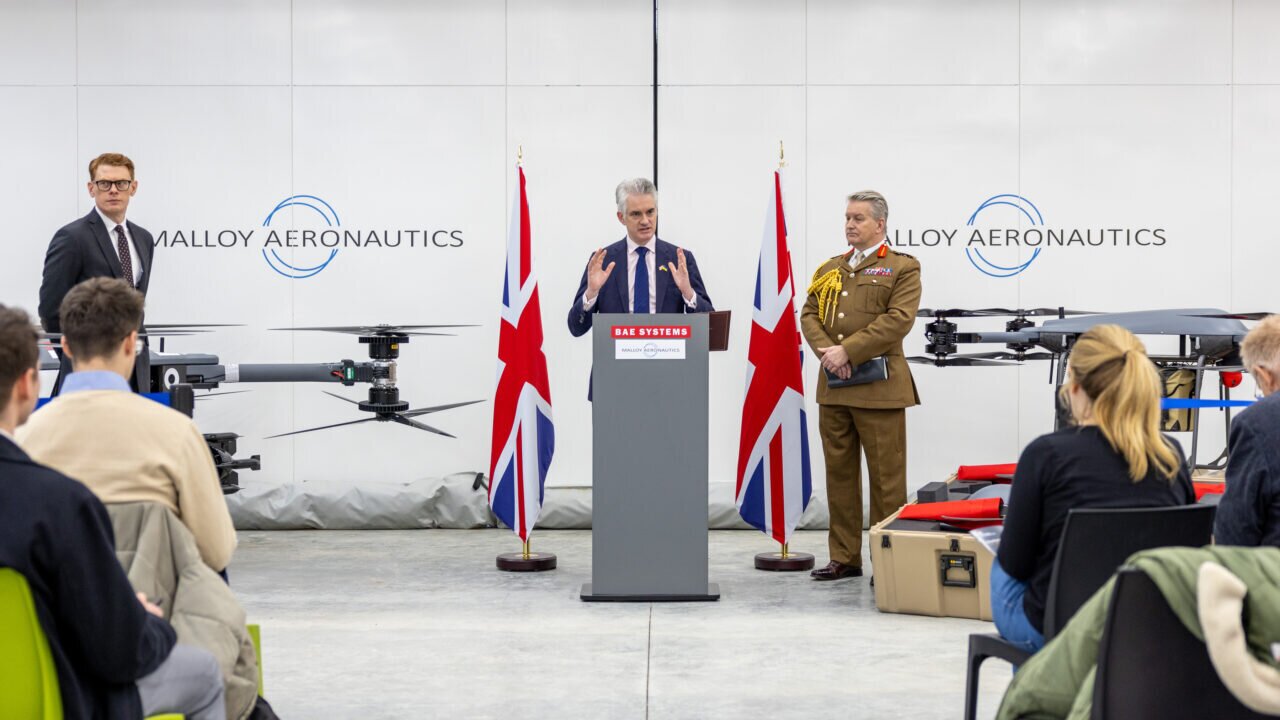Minister for Defense Procurement, James Cartlidge and Commander of Strategic Command, General Sir Jim Hockenhull announced a new government strategy to support the development and deployment of uncrewed systems to the UK Armed Forces during their visit to Malloy Aeronautics.
The UK Defense Drone Strategy will create a unified approach across all three military services and industry to enable the rapid experimentation, testing, evaluation and procurement of uncrewed platforms.
BAE Systems who recently announced the acquisition of Malloy Aeronautics have invested in uncrewed systems across land, sea and air domains for many years and the new strategy is an important next step.
The strategy will help academia and industry to build on the UK’s already world-renowned leadership in this technology and increase the pace at which we can identify opportunities and collaborate to deliver new capabilities across all domains.
The UK Ministry of Defense made the following statement on its strategy:
“A new strategy backed by at least £4.5 billion of investment over the next decade will accelerate access to uncrewed systems for the UK Armed Forces, rapidly equipping them with innovative technology across air, sea, and land.
The UK Defense Drone Strategy, born from lessons learned in Ukraine, will harness innovative capabilities across UK defense. It will enable the rapid experimentation, testing and evaluation of uncrewed platforms, unifying the approach of the British Army, Royal Navy and Royal Air Force, integrated by UK Strategic Command, while crucially working in lockstep with industry.
Drones are a game-changing technology that are constantly evolving, and it is crucial that the UK continues to invest in and maintain our position on the cutting edge of drone development to stay one step ahead of our adversaries.
The new approach will see uncrewed systems delivered at pace into the hands of the British Armed Forces, equipping personnel with critical intelligence, reconnaissance, surveillance, strike and logistical capabilities. This will leave behind long development timelines and lengthy requirement discussions. Once operational, the systems will be able to be developed and upgraded – or ‘spiraled’ - to keep pace with the rapid evolution of technology and changing threat picture.
Our initial priority remains the successful delivery of the Ukraine-UK uncrewed systems initiative, building on the UK’s donation of over 4,000 drones for Ukraine. The UK Defense Drone Strategy will help Armed Forces personnel meet the relentless cycle of battlefield adaptation, as has been repeatedly underpinned as Ukraine continues to successfully resist the Russian invasion.”
Minister for Defence Procurement, James Cartlidge said:
“The conflict in Ukraine has been an incubator for new ways of war and we need to learn and implement those hard-fought lessons.
Rapidly being able to develop and upgrade uncrewed systems will be key to gaining battlefield advantage and we must seize this opportunity to grow and sustain such skills and capabilities in the UK.
The strategy brings together a clear, unified focus – backed by billions in funding - while providing the flexibility to meet different requirements in the air, over land and at sea.
Ultimately, this is about learning the lessons from the Ukrainian frontline to procure drones at scale for the UK’s Armed Forces.”
Commander of UK Strategic Command, General Jim Hockenhull said:
“This strategy, backed by significant investment, offers the opportunity to transform our approach to the acquisition, integration, and exploitation of uncrewed systems.
The partnership with industry will be vital to ensure we harness innovation and generate world-leading capability.
Integrating advanced uncrewed systems into our suite of capabilities will protect the force, deter our adversaries and, when necessary, help us to fight and win.”
Chief Executive, Defence Equipment and Support (DE&S), Andy Start said:
“DE&S has supported the rapid procurement of large numbers of uncrewed aerial systems for Ukraine, and it is clearer than ever that unhindered access to battle-winning uncrewed systems is absolutely crucial in modern day combat.
We are delighted to be working with frontline commands and industry partners to identify, test and deliver platforms that will give the UK Armed Forces the competitive edge they require to protect the nation and support our allies.”
📌Officials of the UK Ministry of Defense (@DefenceHQ) announced a new government strategy to support the development and deployment of uncrewed systems to the UK Armed Forces during their visit to @MalloyAero.
🔗https://t.co/0ngXPDy5FL pic.twitter.com/LhVhLmiWxK— Defensehere (@defensehere_en) February 23, 2024









